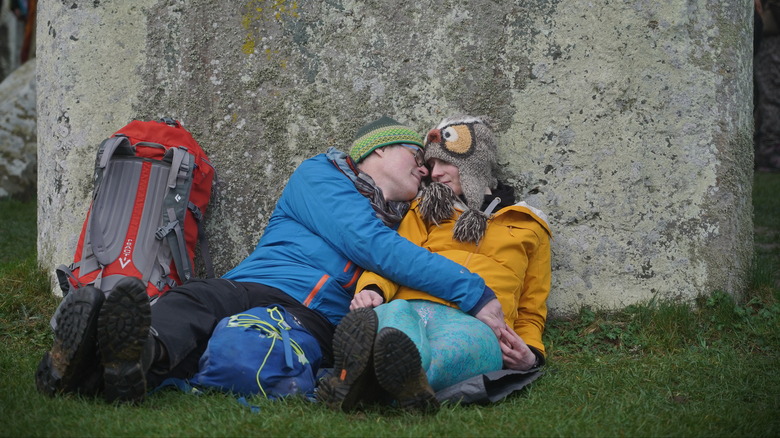Do Opposites Actually Attract In A Relationship?
It's a familiar phrase you learned as a child: opposites attract. Lining up a north pole magnet with its south pole opposite, feeling them move toward one another in your hands, you recognized the strength and truth of this saying. Growing older, you wondered if this same principle applies to people as well as magnetic fields. Haven't you heard that good girls always like bad boys?
But that's not scientific evidence. Not only do you want to understand why attraction occurs, you also want to know what traits attract people the most. A number of hardworking researchers say they've already found some answers. But the truth, as usual, is complicated.
Sociologist Daniel T. Lichter and statistician Debra L. Blackwell examined couples in three separate modes of relationships and found that most of them, whether dating, cohabiting, or married, shared the same racial, educational, and religious identity. Their study is published in The Sociological Quarterly.
Comfort matters
Psychologists Matthew Montoya and Robert Horton came to a similar conclusion in their own analysis published in the Journal of Social and Personal Relationships. Instead of conducting a single new study, they reviewed and analyzed dozens of past studies that investigated whether similarity leads to attraction. What they discovered is strong evidence that two people who resemble one another in terms of personality, attitudes, interests, and other traits are likely to find each other appealing.
People, then, who see each other as wildly different — opposites — will likely find one another undesirable. So magnets yes, humans no. What, then, explains this human behavior?
The work of psychologist Donn Byrne suggests one possible reason. His research, also appearing in the Journal of Social and Personal Relationships, showed that people feel more comfortable with those who are similar (as opposed to dissimilar) to themselves. A separate study, published in Communication Monographs, suggests that exchanges, communication, and contact between individuals with a lot in common are smoother and so more enjoyable and gratifying than between divergent pairs.
A wider context
The research of Annika Elwert of Lund University published in the European Journal of Population brings another element, equality, into the mix. She notes that in most European nations, marriages where one partner is an immigrant, the other a native, have increased over time. "Intermarriage is often thought to signal the fact that different social groups regard one another as equals," she writes. Yet, her study results show that when native-born Swedes partner with immigrants, they often have mismatched educational achievement and socioeconomic status compared to couples from similar backgrounds. Elwert adds that, when people marry new-comers who are more educated, say, or older, this suggests they really don't see their immigrant partners as equals. Mismatched couples, then, find their own ways to balance the scales of attraction.
Finally, each of us knows at least one long-standing couple who describe themselves as opposites. Psychologist Matthew D. Johnson, writing for The Conversation, argues this self-perception is not wholly accurate. Partners who begin their relationship with many shared habits and feelings find ways to distinguish themselves from one another over time. He states, "For example, if one member of a couple is slightly more humorous than the other, the couple may settle into a pattern in which the slightly-more-funny spouse claims the role of 'the funny one' while the slightly-less-funny spouse slots into the role of 'the serious one.'" Similarity, like beauty, is in the eye of the beholder.


